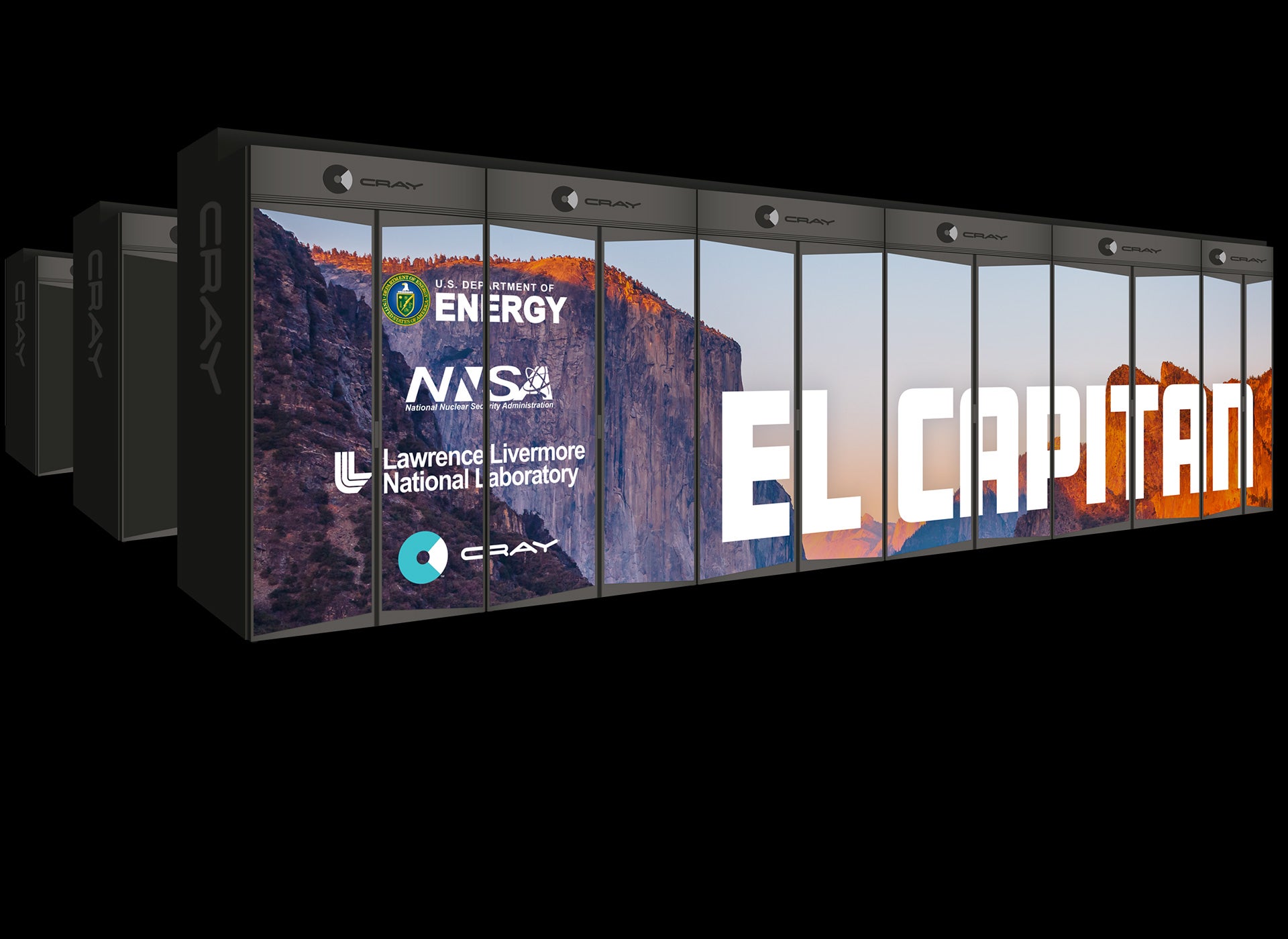
The National Nuclear Security Administration (NNSA), a part of the US Department of Energy (DOE), has today announced that it will be taking delivery of the world’s fastest exascale-class supercomputer.
Developed by Hewlett Packard Enterprise (HPE) and featuring AMD processors, GPUs and architecture, the supercomputer will be ten times the current world’s fastest, with a speed of 2 exaflops.
Dubbed El Capitan, it is expected to be delivered at the start of 2023 to the DOE’s Lawrence Livermore National Laboratory, where it will be used by three NNSA labs to help ensure the security and reliability of the US’ nuclear stockpile.
“As an industry and as a nation, we have achieved a major milestone in computing. HPE is honored to support the US Department of Energy and Lawrence Livermore National Laboratory in a critical strategic mission to advance the United States’ position in security and defense,” said Peter Ungaro, senior vice president and general manager, HPC and Mission Critical Systems at HPE.
“The computing power and capabilities of this system represent a new era of innovation that will unlock solutions to society’s most complex issues and answer questions we never thought were possible.”
Inside the world’s fastest supercomputer
The supercomputer is not only the world’s fastest, but will – according to HPE – be more powerful than the 200 fastest supercomputers currently in operation globally combined.
How well do you really know your competitors?
Access the most comprehensive Company Profiles on the market, powered by GlobalData. Save hours of research. Gain competitive edge.

Thank you!
Your download email will arrive shortly
Not ready to buy yet? Download a free sample
We are confident about the unique quality of our Company Profiles. However, we want you to make the most beneficial decision for your business, so we offer a free sample that you can download by submitting the below form
By GlobalDataWith a performance record of 2 exaflops – 2,000 petaflops – it is also 30% faster than initial estimates made in 2019.
At the core of this is HPE Cray Shasta technologies, which have been designed to support both high-performance and scalability. This will enable El Capitan to support the NNSA’s Life Extension Program, which is designed to modernise weapons in the US’ nuclear stockpile.
“The exceptional computing power promised by El Capitan, based on HPE’s Cray Shasta architecture, will ensure the NNSA laboratories can continue to excel at their national security missions and make it possible for the U.S. to remain competitive on the global stage in high performance computing for many years to come,” said Bill Goldstein, director, Lawrence Livermore National Laboratory.
“We look forward to continuing our work with HPE and AMD to usher in this new exascale era with the most capable hardware on the planet.”
The supercomputer also features key next-generation components from AMD, including EPYC processors, currently codenamed Genoa, which feature Zen 4 processor cores. El Capitan also features AMD Radeon Instinct GPUs, which are offered a high-bandwidth, low latency connection with its CPUs by AMD Infinity Architecture.
“We are pleased to continue our longstanding journey with HPE in co-developing innovative technologies for a range of solutions, and now, for the world’s most powerful, exascale-class supercomputer,” said Forrest Norrod, senior vice president and general manager of the Datacenter and Embedded Solutions Business Group, AMD.
“We look forward to continuing our collaboration with HPE to bring together next-generation AMD EPYC CPUs and Radeon Instinct GPUs with HPE’s Cray Shasta system to power complex, data-intensive HPC and AI workloads for El Capitan that today’s systems cannot manage.”
Read more: Inside HPE’s Technology Renewal Centre, its base in the war on e-waste







